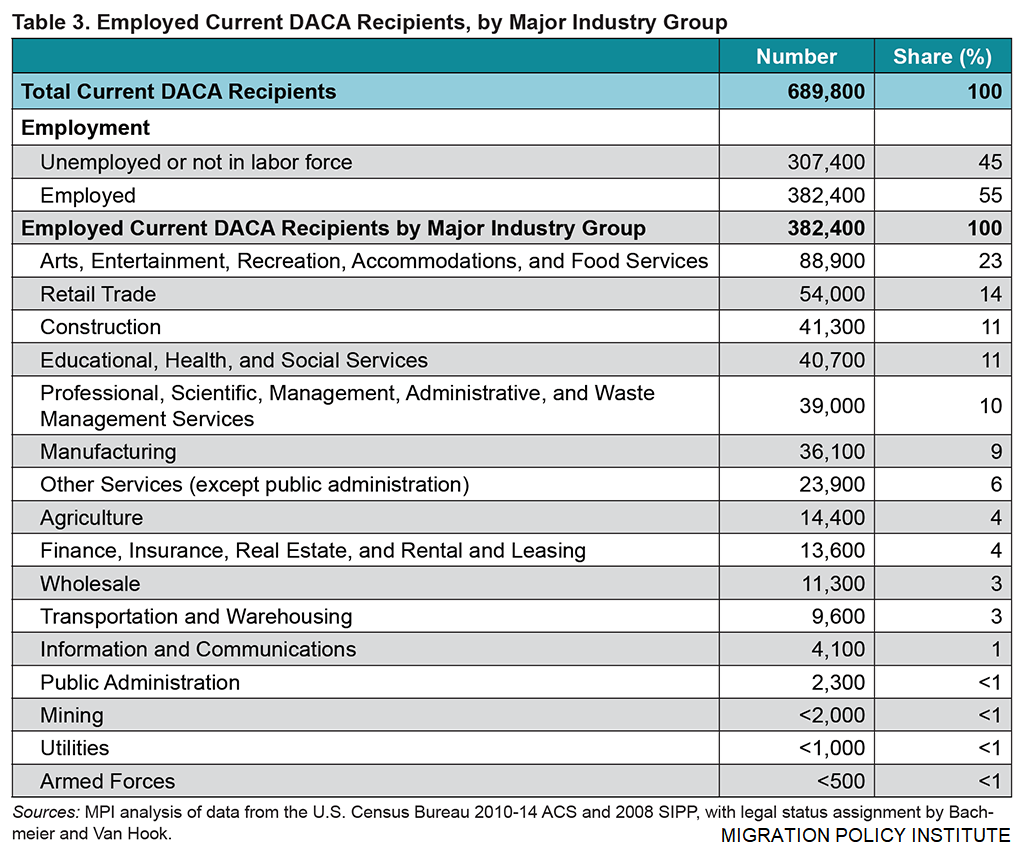
WASHINGTON — They teach school, provide health care, work construction jobs and use high-tech skills at the world’s most iconic companies.
But just a few years after stepping out of the shadows to launch those careers, they face the type of legal jeopardy that could bring an abrupt end not only to those careers but to their right to remain in the United States, the only country they have known since they arrived here as undocumented children.
Nothing short of an act of Congress at this time will address their risk of deportation.
That’s the process put in motion by President Donald Trump’s administration when it announced Sept. 5 the revocation of the Obama-era program known as DACA, which stands for Deferred Action for Childhood Arrivals and provides a temporary path for some immigrants to work and attend school in the U.S.
While DACA’s termination, no doubt, would have severe consequences for individuals, it also could impact those employers who embraced the program and put those individuals to work.
Integrated in the workforce
A November report by the Migration Policy Institute provided figures indicating just how integrated DACA-covered workers have become in the nation’s workforce.
According to MPI’s numbers, 55 percent of the 689,800 young adults currently covered by the DACA program are employed, representing 382,000 jobs. (The often-seen higher number of 790,000 DACA recipients includes those who are no longer in the program due to: the $495 cost, the Trump administration’s direction on renewal, no longer living here or death.)
Top areas of employment: hospitality with 89,000 or 23 percent of DACA workers; retail, 54,000 or 14 percent; construction, 41,000 or 11 percent; education, health and social services, 41,000 or 11 percent; professional services, 39,000 or 10 percent.
Once the two-year DACA benefit that allows them to work legally begins to expire in March, MPI estimates that roughly 915 people, on average, will lose that protection daily.
A peak period is predicted for the first quarter of 2019, when that daily average will grow to about 50,000 per month.
What happens to individual DACA workers appears to depend largely on where they work.
Stan Marek, chairman and CEO of the Marek family’s construction firm headquartered in Houston, is an example of an employer who plans to keep his DACA workers, regardless of what Congress does.
“We have several DACA recipients at work in our office and as well as in the field,” Marek said, emphasizing the money and time his firm invested in training them. “They are excellent employees.”
Describing himself as a Catholic who believes in social justice, Marek said he became active in the effort to save DACA at the suggestion of his bishop.
“This is the duty of our elected officials,” Marek said.
With Houston still recovering from the devastating flooding that followed Hurricane Harvey, he said undocumented workers willing to help that effort must be allowed to work openly and be protected from those who might take advantage of them because of their legal status.
Along with other giants of the high-tech world, Microsoft immediately made it clear it will stand by the 39 so-called “DREAMers” among its employees. The firm has vowed to pay legal expenses for any DACA employee subject to deportation by the federal government.
Others feel just as strongly about their DACA-covered employees but remain concerned about the legal ramifications if Congress allows the program to end in March.
Chris Brewster, founder and superintendent of public charter Santa Fe South Schools in Oklahoma City, expressed support. He said he understands, however, that he would have to terminate DACA-covered employees on the date their DACA benefits expired. The district could suffer a potential budget hit if its federal funds were put at risk, he said.
MPI uses the figure 8,800 as a national estimate for the number of DACA recipients currently employed as teachers or librarians. Referring to the “many” district students who are covered by DACA, Brewster said the impact of the pending termination of that program was already being felt by those students’ families. Parents who for years dealt with their own undocumented status had welcomed a program that at least offered protection to their children from deportation. “That fear has come rushing back,” he said.
MPI figures indicate 20 percent of DACA recipients were enrolled in secondary school with 18 percent attending a postsecondary institution.
The American Medical Association CEO and executive vice president, James Madara, warned congressional leaders in a letter that failure to ensure that DACA recipients remain in the U.S. would have a major impact on not only the healthcare industry but individual patients.
He pointed to figures showing a current shortage of 8,200 primary care physicians and estimates that DACA could introduce 5,400 previously ineligible physicians into the health care system.
A study released by the Association of American Medical Colleges says the shortfall in primary care physicians could climb as high as 43,100 by 2030.
Meanwhile, the congressional clock continues to tick.
Read More of Our Dreamer Coverage































